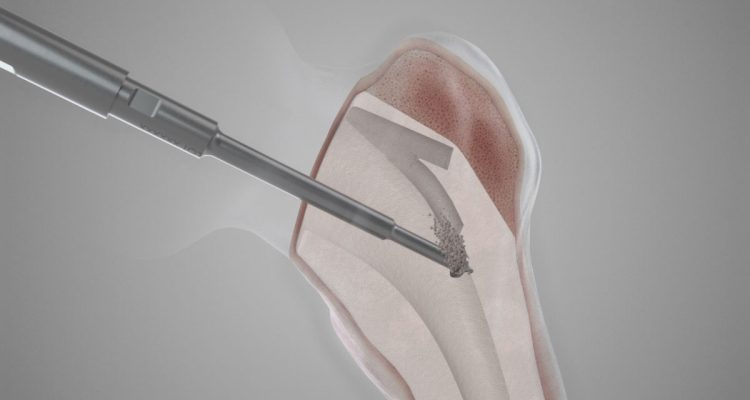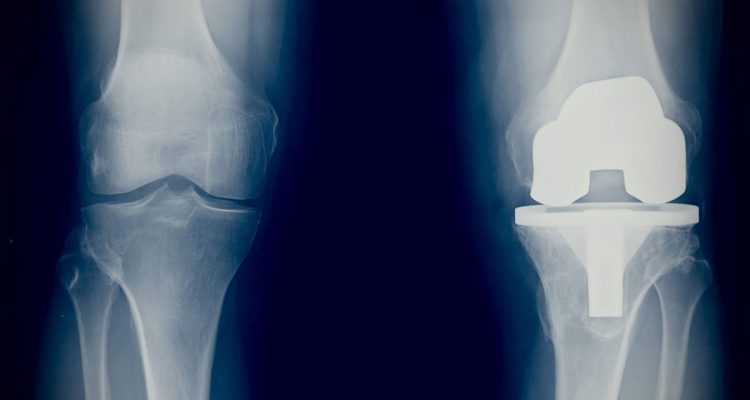Total joint replacement surgeries are one of the most common procedures practiced in orthopedics with hip and knee replacements being the most common procedures performed, followed by shoulder and elbow replacements. Over time, a total joint replacement begins to wear and tear, and a revision procedure may be necessary to replace worn-out joint components with a new or improved prosthesis.
Joint replacement involves fixation of prosthetic components to the bone. This can either be achieved by using cement or by a cementless (or press-fit prosthesis) method. Cemented implants are fixed into place with quick-drying bone cement that bonds the patient’s natural bone with the prosthetic. Most joint implants are cemented procedures. The cement used for joint replacements is polymethylmethacrylate (PMMA), to which an antibiotic is usually added to reduce the incidence of deep infections.
The drawback to using bone cement is that it may degrade over time. Portions of cement can detach, resulting in problems such as loosening of the artificial joint, which eventually prompts the need for another joint replacement surgery (revision surgery). As the bone cement breaks down it can also leave debris behind, which can irritate the tissues surrounding the joint. Eventually it can lead to a condition called osteolysis, in which the body begins to remove small bits of bone around the implant as well. Osteolysis weakens the bone, causing further loosening of the joint implant.
On the other hand, cementless prostheses are porous or hydroxyapatite coated components that encourage natural bone growth to provide fixation. Over time, with the natural wear and tear on these components from daily movement, a revision surgery is required where the implant needs to be separated from the bone. This separation has been traditionally done using burs or osteotomes resulting in more damage to the surgical site than healing. Instead, another less-invasive option to address the removal of bone and implant is to opt for an ultrasonic device.
Ultrasound in cementless prosthesis revision is a safe and effective alternative to other more traditional treatment options. By using an oscillatory system, damage to the surgical site due to heat is minimized to levels far below those produced by high-speed burs or saws. By reducing the heat level exposure, one avoids further damage to an already-compromised surgical site. By using a low force cutting coupled with precise control of energy delivery, ultrasonic powered osteotomes are a preferred choice by many orthopedic surgeons for revision arthroplasty procedures.
Ultrasound energy is a safe alternative to the heat energy generated by bone saws and burs. When a revision of a cementless prosthesis is required, the implant is removed by cutting through the bone implant interface using a variety of osteotomes coupled with the ultrasonic handset, whilst ensuring continuous irrigation with saline. With a better prognosis for the overall procedure, ultrasonic devices for revision arthroplasty are gaining traction and pose an advantage over more traditional and invasive procedures.








